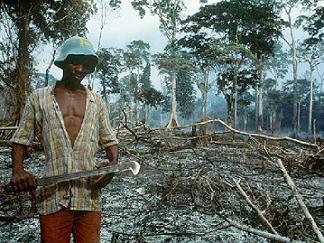
 |
|
It has 18 of the World Wildlife Fund’s (WWF) “Global 200” ecoregions, and 24 of Bird Life International’s 218 “Endemic Bird Areas.” It also has 10% of the world’s flowering plant species and ranks as one of the world’s centers for agrobiodiversity of plant cultivars4 and domesticated livestock.
|
|||||||||||||||||||||||||||||||||||||||||||
|---|---|---|---|---|---|---|---|---|---|---|---|---|---|---|---|---|---|---|---|---|---|---|---|---|---|---|---|---|---|---|---|---|---|---|---|---|---|---|---|---|---|---|---|---|
In many places, they have created new local pressures on forests that have exacerbated the strains imposed by large-scale operators (World Bank 2001). Hence the factors driving deforestation are not only multiple, but also are the legacy of the New Order. Resolution of conflicts over land tenure and management rights is a key factor to reducing on-going rates of deforestation and achieving more sustainable natural resources management. |
|---|
 |
 |
|---|
|
||||||||||||
|---|---|---|---|---|---|---|---|---|---|---|---|---|
|
|
||||||||||||